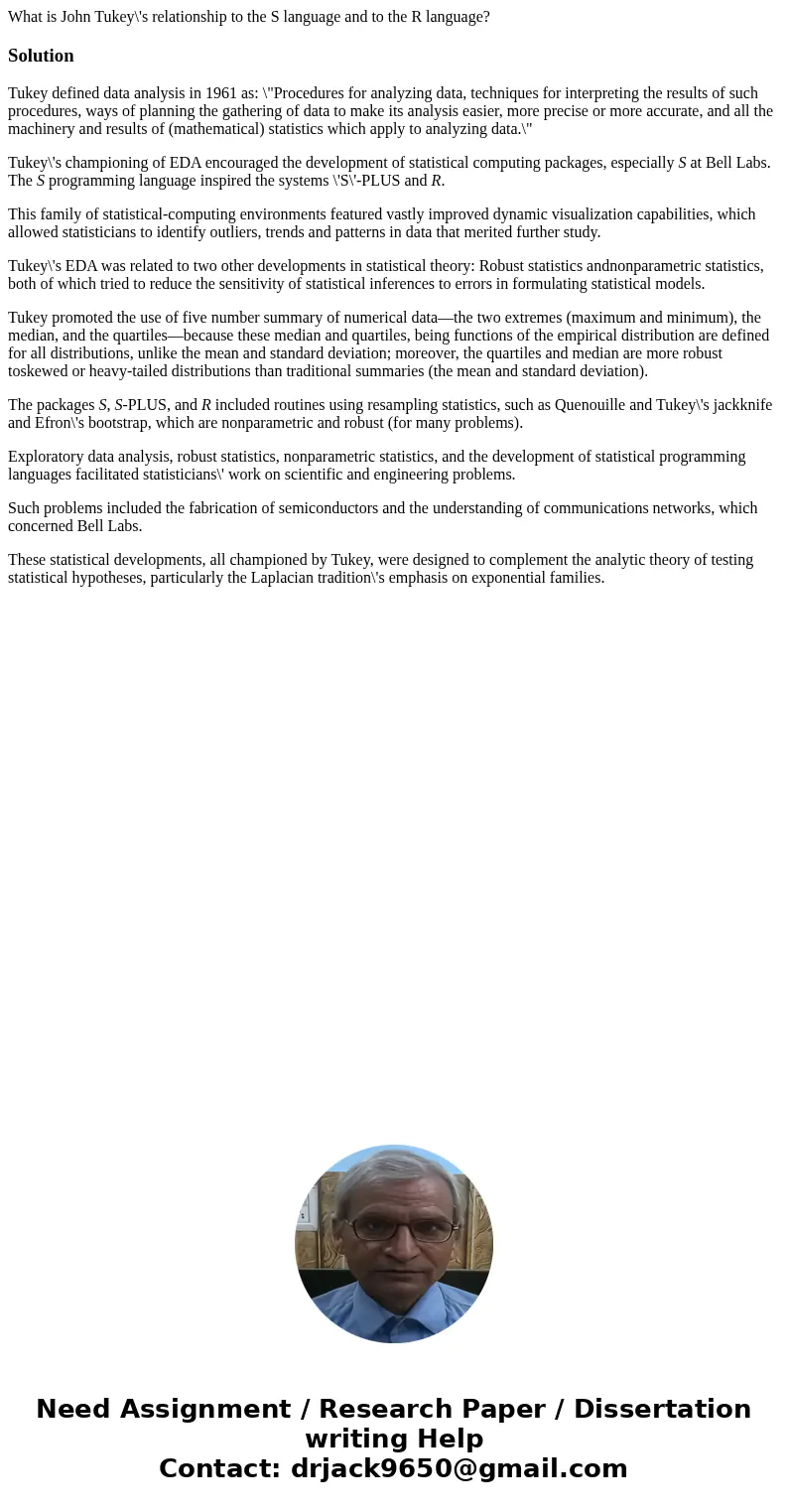What is John Tukeys relationship to the S language and to th
What is John Tukey\'s relationship to the S language and to the R language?
Solution
Tukey defined data analysis in 1961 as: \"Procedures for analyzing data, techniques for interpreting the results of such procedures, ways of planning the gathering of data to make its analysis easier, more precise or more accurate, and all the machinery and results of (mathematical) statistics which apply to analyzing data.\"
Tukey\'s championing of EDA encouraged the development of statistical computing packages, especially S at Bell Labs. The S programming language inspired the systems \'S\'-PLUS and R.
This family of statistical-computing environments featured vastly improved dynamic visualization capabilities, which allowed statisticians to identify outliers, trends and patterns in data that merited further study.
Tukey\'s EDA was related to two other developments in statistical theory: Robust statistics andnonparametric statistics, both of which tried to reduce the sensitivity of statistical inferences to errors in formulating statistical models.
Tukey promoted the use of five number summary of numerical data—the two extremes (maximum and minimum), the median, and the quartiles—because these median and quartiles, being functions of the empirical distribution are defined for all distributions, unlike the mean and standard deviation; moreover, the quartiles and median are more robust toskewed or heavy-tailed distributions than traditional summaries (the mean and standard deviation).
The packages S, S-PLUS, and R included routines using resampling statistics, such as Quenouille and Tukey\'s jackknife and Efron\'s bootstrap, which are nonparametric and robust (for many problems).
Exploratory data analysis, robust statistics, nonparametric statistics, and the development of statistical programming languages facilitated statisticians\' work on scientific and engineering problems.
Such problems included the fabrication of semiconductors and the understanding of communications networks, which concerned Bell Labs.
These statistical developments, all championed by Tukey, were designed to complement the analytic theory of testing statistical hypotheses, particularly the Laplacian tradition\'s emphasis on exponential families.

 Homework Sourse
Homework Sourse